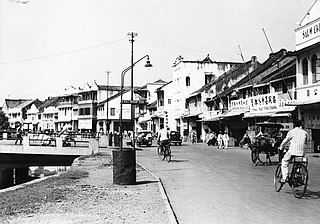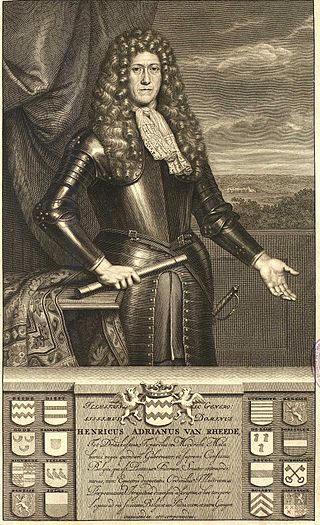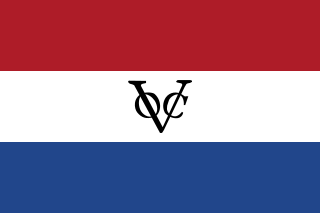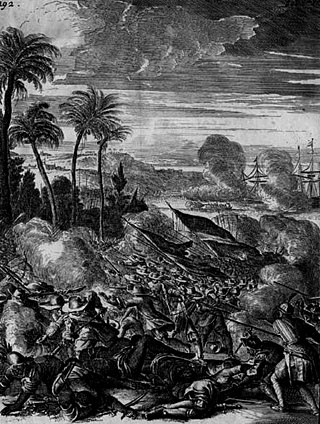The known and sometimes formally documented history of Mauritius begins with its possible discovery by Austronesians under the Austronesian expansion from pre-Han Taiwan,circa 1500 to 1000 BC,and then by Arabs,,followed by Portuguese and its appearance on European maps in the early 16th century. Mauritius was successively colonized by the Netherlands,France and Great Britain,and became independent on 12 March 1968.

Batavia ( ) was a ship of the Dutch East India Company (VOC). She was built in Amsterdam in 1628 as the flagship of one of the three annual fleets of company ships and sailed that year on her maiden voyage for Batavia,capital of the Dutch East Indies. On 4 June 1629,Batavia was wrecked on the Houtman Abrolhos,a chain of small islands off Western Australia.

Batavia was the capital of the Dutch East Indies. The area corresponds to present-day Jakarta,Indonesia. Batavia can refer to the city proper or its suburbs and hinterland,the Ommelanden,which included the much larger area of the Residency of Batavia in the present-day Indonesian provinces of Jakarta,Banten and West Java.
The following lists events that happened during the 1690s in South Africa.
Jeronimus Cornelisz was a Dutch apothecary and Dutch East India Company merchant who sailed aboard the merchant ship Batavia which foundered near the Australian mainland. Cornelisz then led one of the bloodiest mutinies in history.

Simon van der Stel was the first Governor of the Dutch Cape Colony (1691),the settlement at the Cape of Good Hope. He was interested in botany,establishing vineyards Groot and Klein Constantia,and producing a famous dessert wine. He is considered one of the founders of South African viticulture.

Hendrik Adriaan van Rheede tot Drakenstein was a military man and a colonial administrator of the Dutch East India Company and naturalist.

Dutch Ceylon was a governorate established in present-day Sri Lanka by the Dutch East India Company. Although the Dutch managed to capture most of the coastal areas in Sri Lanka,they were never able to control the Kingdom of Kandy located in the interior of the island. Dutch Ceylon existed from 1640 until 1796.
Adam Tas was a community leader in the Cape Colony at the turn of the 17th century,and is best known for his role in the conflict between Cape Governor Willem Adriaan van der Stel and the Free Burghers at the Cape of Good Hope.

Willem Adriaan van der Stel was an Extraordinary Councillor of the Dutch East Indies,and Governor of the Cape Colony,a way station for the Dutch East India Company (VOC),from 23 January 1699 to 1707. He was dismissed after a revolt and was exiled to the Netherlands.

Abraham Patras was Governor-General of the Dutch East Indies from 11 March 1735 until 3 May 1737. He was born in Grenoble of a refugee French Huguenot family. In 1685,his family fled to the Netherlands.

Adriaan Valckenier was Governor-General of the Dutch East Indies from 1737 to 1741. Mainly remembered for his involvement in the 1740 Batavia massacre,Valckenier was arrested for his complicity in 1742. He died in prison in Batavia nearly a decade later.

The early history of the South African wine industry can be traced to the founding of a supply station at the Cape of Good Hope by the Dutch East India Company. Jan van Riebeeck was given the task of managing the station and planting vineyards to produce wine and grapes in the Wijnberg;that could be used to ward off scurvy for sailors continuing on their voyages along the spice route. In 1685,another Cape Governor,Simon van der Stel,purchased a large 750-hectare (1,900-acre) estate,founding what later became the world-renowned Constantia wine estate. In the 19th century,South Africa fell under British rule which proved lucrative for the wine industry as South African wine flowed into the British market. This prosperity lasted until the 1860s when the Cobden–Chevalier Treaty signed by the Palmerston government and France reduced the preferential tariffs that benefited South African wine in favor of French wine exports.

Mauritius was an official settlement of the Dutch East India Company on the island of Mauritius between 1638 and 1710,and used as a refreshing station for passing ships. It was already frequented by Dutch ships from 1598 onwards,but only settled in 1638,to prevent the French and the British from settling on the island.

The Groote Kerk is a Dutch Reformed church in Cape Town,South Africa. The church is South Africa's oldest place of Christian worship. The first church on this land was built in 1678. Willem Adriaan van der Stel laid the cornerstone for the church. It was replaced by the present building in 1841 built by Herman Schuette and the original tower was retained. The pulpit is the work of Anton Anreith and the carpenter Jacob Graaff,and was inaugurated on 29 November 1789. The Groote Kerk lays claim to housing South Africa's largest church organ,which was installed in 1954
Dirk Coetzee/Coetsee was a Dutch colonist and the Hoofdheemraad (Chancellor) of the District of Stellenbosch and Drakenstein in South Africa for most of the 1690s and early 1700s. He also served as captain of the Stellenbosch Infantry and deacon of the Stellenbosch Moederkerk at different points in time. As captain of the Stellenbosch Infantry,which comprised mostly Huguenots,he provided military backing for a rebellion which began in 1706 against the Governor of the Cape Colony,Willem Adriaan van der Stel,whom the vrijburghers had accused of tyranny,corruption and racketeering. Coetsee was imprisoned in the dungeon of the Castle of Good Hope along with the other leaders of the Huguenots but he was released after a year. The rebellion ultimately succeeded in 1707 when the Dutch East India Company recalled the Governor and other colonial officials. An account of the rebellion is vividly described in the "Diary of Adam Tas".
The Schoonenberg,also spelled Schonenberg and Schonenbergh,was a trading ship operated by the VOC between 1717 and 1722. The ship,a Spiegelretourschip or Dutch East Indiaman,was damaged beyond repair in an accident at Struisbaai,South Africa on 20 November 1722,during a return voyage to the Netherlands from Batavia,and was later burned and destroyed. This happened on the second of two calamitous voyages;on the maiden sailing in 1720,75 of the crew died when the ship ran out of water and food on the leg from Cape Town to Ceylon,before finally reaching the diversion port of Mocha after spending 6 months stranded in present-day Somalia.

Abraham Bogaert was a pharmacist,author and poet who played a major role in the rebellion of the Free Burghers against the government of Governor Willem Adriaan van der Stel,while also writing poems about this uprising and life at the Cape.
Hendrik Crudop was a VOC official who also acted as commander at the Cape of Good Hope after the death of Commander Johan Bax van Herenthals in 1678 until the arrival of Simon van der Stel.

The Conquest of Malabar (1658-1663) encompassed a series of military campaigns led by Rijckloff van Goens with the objective of acquiring Portuguese-controlled territories along the Malabar Coast. The Dutch pursued these campaigns with determination,ultimately achieving success in their endeavor. As a result,the Dutch secured control over various regions along the Malabar Coast,marking a significant shift in the regional geopolitical landscape











